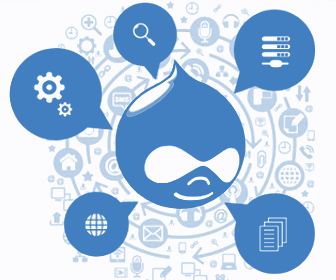I can’t decide whether I’m relieved or terrified to hear of Trump’s on-going organizational incompetence.
Defiance
This weekend I attended a wonderful gathering of people who are not OK with letting ignorance and hate infect our community and our state. Before Durham in Defiance, some people complained that we should be demonstrating in the streets rather than standing around talking. We have been in the streets for many years, and we will turn out again (and again, and again). But what made this event really important was that it was organized for the long haul.
Look at yourself, America.
 Through a Looking Glass Darkly (2012) by Mr. Fish.
Through a Looking Glass Darkly (2012) by Mr. Fish.
(This artist seemed familiar. It turns out I posted another great cartoon of his in 2005.)
You what now?
Let me get this straight: As recently as a week ago, Trump supporters threatened armed revolution if their candidate lost the election. Now that he has in fact won the election (without the majority of votes) they are complaining that people are nonviolently protesting his politics of hate?
I’ve never seen such sore winners. It must be rough when you run everything and still think the entire world is out to get you.
Why do we need mindfulness at school?
I wrote a thing to help out my child’s after school program and thought it would make a good blog entry as well. Also posted at MomsRising.org. Enjoy.
Both adults and children can benefit from mindfulness training, especially in the sometimes-challenging public school environment. Mindfulness is simply the practice of training our brain to be aware of our feelings, our bodies, and our environment in the present moment. Although it is an ancient and sometimes-spiritual practice, it is increasingly being used in everyday settings such as corporate businesses and fitness centers and… schools!
Mindfulness can help both teachers and students to reduce stress and anxiety, strengthen attention and focus, support social and emotional growth, and better resolve the inevitable conflicts that arise. According to Dr. Kirk Strosahl and Dr. Patricia Robinson, “research indicates that brain training involving mindfulness practices can strengthen areas of the brain responsible for attention, emotional control, and problem solving… There is even emerging evidence that mindfulness-based brain training produces permanent structural changes in the brain.”
I am thrilled that the students and staff at my child’s after school program will be participating in a mindfulness training this year, and I hope it will just be the beginning of bringing a more mindful approach to education for all of our kids.
Here are a few articles I found for those who are interested in learning more:
Great information and links to resources for educators:
http://www.mindfulteachers.org/p/benefits-of-mindfulness.html
In-depth article on When Mindfulness Meets the Classroom:
http://www.theatlantic.com/education/archive/2015/08/mindfulness-education-schools-meditation/402469/
Why Children Need Mindfulness as Much as Adults Do:
http://www.huffingtonpost.com/2014/05/22/why-children-need-mindful_n_5354143.html
Let’s do Drupal!
Following up on the very basic intro to Drupal class I created and taught for Girl Develop It RDU in the spring, I am now offering a half-day workshop for beginners who actually want to start getting their hands dirty using Drupal. The class is this weekend and we still have a lot of spaces left, so if you or someone you know is interested in getting a better understanding of Drupal, please let them know and share this link: meetup.com/Girl-Develop-It-RDU/events/232604888/
My slides or “curriculum” (such as it is) are available here: bit.ly/gdirdu-drupal. If you would like to adapt them for other noncommercial uses, please let me know and I will share an editable copy.


Drupal from 30,000 Feet
Last week I taught a class for Girl Develop It RDU to introduce Drupal to people who have never used it before.
It might not make sense without my brilliant explanations, but you can see my presentation here.
First they came
First they came for the Anarchists, and I did not speak out—
Because I was not an anarchist.
Then they came for Muslims, and I did not speak out—
Because I was not muslim.
Then they came for Black Lives Matter, and I did not speak out—
Because I was not Black.
Then they came for the journalists, and I did not speak out—
Because I was not a journalist.
Then they came for me—and there was no one left to speak for me.
After Pastor Martin Niemöller.
In which I fail to cheer for @Jack’s return to #Twitter
A lot of people (well certain people) have been fussing about Twitter co-founder Jack Dorsey returning to the company as it’s new CEO. While I think he’ll easily be better than his predecessor Dick Costolo, I see no cause to celebrate.
The magic in Twitter has always been the connections between people and the ability to grow and connect communities of people. The Arab Spring is the most famous and impactful example of this, but “Black Twitter” is a more current illustration. It’s a large and decentralized community which is having a real impact on people’s lives through connection, cultural critique, and shining a light on police brutality via #BlackLivesMatter.
Today I followed a link posted by an old Twitter friend. It was a collection of reactions of “Twitter influencers” to Jack’s return. They were all white, a couple were my friends. Responses ranged from “we’ll see” to “Jack is my BFF.” There was not a single concern raised. It should come as no surprise that all of the white, male CEOs of Twitter were hired by a board which is itself nearly all white men (with the exception of a few Asian men and one very powerful woman).
Twitter has been making moves to try to compete with media companies (and Facebook) by pushing big news and events, memes that trend via their mysterious algorithm, and celebrity tweeters. This ground has been covered and there will always be someone who does that better than them. Twitter’s unique value proposition is the ability to find and directly connect with real people who you don’t already know but who add value to your life. To be a participant in a movement (whether it’s for democracy or your favorite TV show) rather than just a consumer. I have rarely seen Twitter’s corporate policies show that they understand or appreciate this value. In addition, their continuing lack of interest in doing anything serious about the pervasive abuse of women online further shows that they just don’t care about us, the users that give their platform meaning.
So I wrote a few tweets about this, but it’s hard to convey the complexity and the importance of this in 140 characters so I wanted to expand in this blog post. If you share my concerns, I’d appreciate a retweet or other show of solidarity.
Dear #BlackTwitter, I hope you are thinking abt other platforms & critical mass, Twitter's leadership does't understand or value community.
— Ruby of Manocide (@Ruby) October 21, 2015
This self-congratulatory collection of all-white "Twitter influencers" loving on @jack is just one case in point: https://t.co/cVjHdMqwsu
— Ruby of Manocide (@Ruby) October 21, 2015
Also to the many communities that have organized for democracy & freedom via Twitter. These ppl don't care abt you. https://t.co/AOYAH66Kfq
— Ruby of Manocide (@Ruby) October 21, 2015
A debate for grown-ups
I’m surprised to report that I enjoyed watching the Democratic candidates debate last night. Well I enjoyed two of them anyway. I was only able to access the video stream on CNN.com about half the time but Twitter kept me looped in without missing a moment. I collected my favorite tweets below.
I was surprised to see that even some of my friends participated in commentary that attacked people for their gender (Hillary the ice queen), culture (Bernie the hippie), or their appearance (pretty much everyone). I can only assume that people do this because they are either extremely immature or they have no legitimate policy critique to make.
I am particularly sick of the hippie-baiting. I come from a long line of hippies and we love our country as much as anyone, if not moreso. Who was there working for civil rights, who marched against the Vietnam War, who cried out against the Iraq War? History will show that we have been on the side of justice and we have been right. Stop marginalizing hippies and listen!





